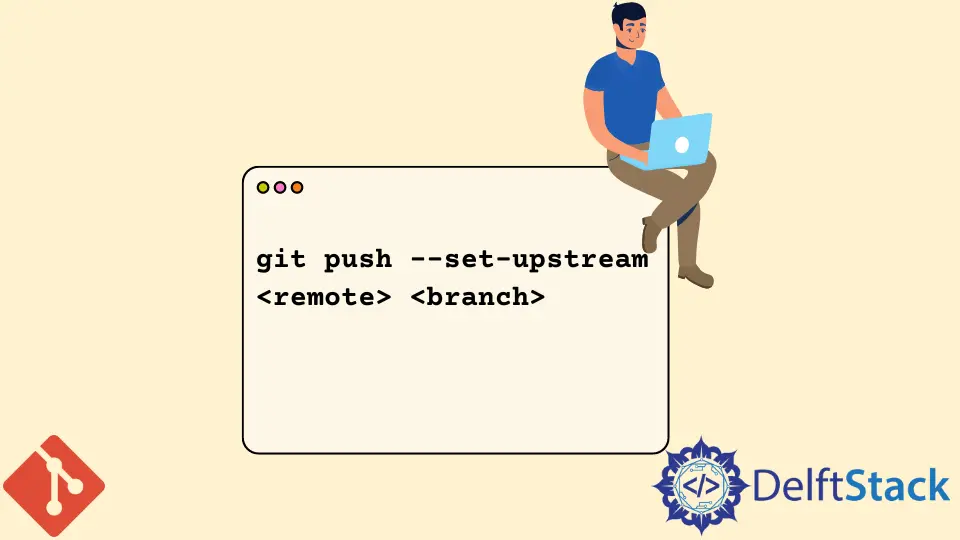How to Set Upstream in Git
- What is an Upstream Branch?
- Setting Upstream for a New Branch
- Changing the Upstream Branch for an Existing Local Branch
- Viewing the Upstream Branch
- Deleting and Resetting Upstream Branches
- Conclusion
- FAQ

Setting up an upstream branch in Git is a crucial step for effective version control and collaboration. Whether you’re working on a solo project or part of a larger team, understanding how to link your local branch to a remote branch can streamline your workflow.
In this tutorial, we will walk you through the process of setting upstream branches in Git. You’ll learn not only the commands but also the rationale behind them, helping you to grasp the concept fully. By the end of this article, you’ll be equipped with the knowledge to manage your branches like a pro.
What is an Upstream Branch?
Before diving into the commands, let’s clarify what an upstream branch is. In Git, an upstream branch is a remote branch that your local branch tracks. This means that when you run commands like git pull or git push, Git knows which remote branch to interact with. Setting an upstream branch is essential for seamless collaboration and keeping your local repository in sync with the remote repository.
Setting Upstream for a New Branch
If you have created a new branch and want to set its upstream branch, you can do this easily using the -u flag with the git push command. Here’s how:
git push -u origin your-branch-name
Output:
To https://github.com/username/repo.git
* [new branch] your-branch-name -> your-branch-name
Branch 'your-branch-name' set up to track remote branch 'your-branch-name' from 'origin'.
When you execute this command, Git pushes your new branch to the remote repository and sets it to track the corresponding remote branch. The -u flag stands for “upstream,” making it clear that you want to establish a tracking relationship. After this, you can simply use git pull and git push without specifying the remote branch, as Git will know where to pull from or push to.
Changing the Upstream Branch for an Existing Local Branch
If you already have a local branch and want to change its upstream branch, you can use the --set-upstream-to option. Here’s the command:
git branch --set-upstream-to=origin/new-branch-name your-branch-name
Output:
Branch 'your-branch-name' set up to track remote branch 'new-branch-name' from 'origin'.
This command allows you to link your existing local branch to a different remote branch. The --set-upstream-to flag specifies which remote branch you want your local branch to track. This is particularly useful if you’ve renamed your remote branch or if you’re switching to a different branch for collaboration. Once you set the upstream, you can seamlessly sync your changes with the new remote branch.
Viewing the Upstream Branch
It’s always good to know which upstream branch your local branch is tracking. You can easily check this with the following command:
git branch -vv
Output:
* your-branch-name 1234567 [origin/new-branch-name] Commit message here
This command lists all your local branches along with their upstream counterparts. The -vv flag provides verbose output, showing you which remote branch each local branch is tracking. If you see an asterisk next to your branch name, it indicates that you are currently on that branch. Knowing your upstream branches helps you stay organized, especially when working on multiple features or fixes simultaneously.
Deleting and Resetting Upstream Branches
Sometimes, you may need to remove an upstream tracking relationship. You can do this using the following command:
git branch --unset-upstream your-branch-name
Output:
Branch 'your-branch-name' no longer tracks 'origin/new-branch-name'.
This command removes the upstream association for your specified local branch. Unsetting an upstream branch can be useful when you no longer need to track a particular remote branch, or if you want to set a new upstream branch. After unsetting, you can set a new upstream branch using the methods described earlier.
Conclusion
In summary, setting upstream branches in Git is a vital skill for any developer or team working with version control. Whether you’re creating a new branch, changing an existing one, or simply checking your upstream settings, understanding these commands will enhance your workflow and collaboration. With the knowledge gained from this tutorial, you can confidently manage your branches and ensure that your local and remote repositories are in sync. Happy coding!
FAQ
-
What does it mean to set an upstream branch in Git?
Setting an upstream branch means linking your local branch to a remote branch, allowing you to easily synchronize changes. -
How do I check which upstream branch my local branch is tracking?
You can use the commandgit branch -vvto see all local branches along with their upstream counterparts.
-
Can I change the upstream branch after it has been set?
Yes, you can change the upstream branch using the commandgit branch --set-upstream-to=origin/new-branch-name your-branch-name. -
What happens if I unset an upstream branch?
Unsetting an upstream branch removes the tracking relationship, meaning your local branch will no longer automatically pull or push to the specified remote branch. -
Is it necessary to set an upstream branch in Git?
While it’s not strictly necessary, setting an upstream branch simplifies your workflow and makes collaboration easier.
Abdul is a software engineer with an architect background and a passion for full-stack web development with eight years of professional experience in analysis, design, development, implementation, performance tuning, and implementation of business applications.
LinkedIn